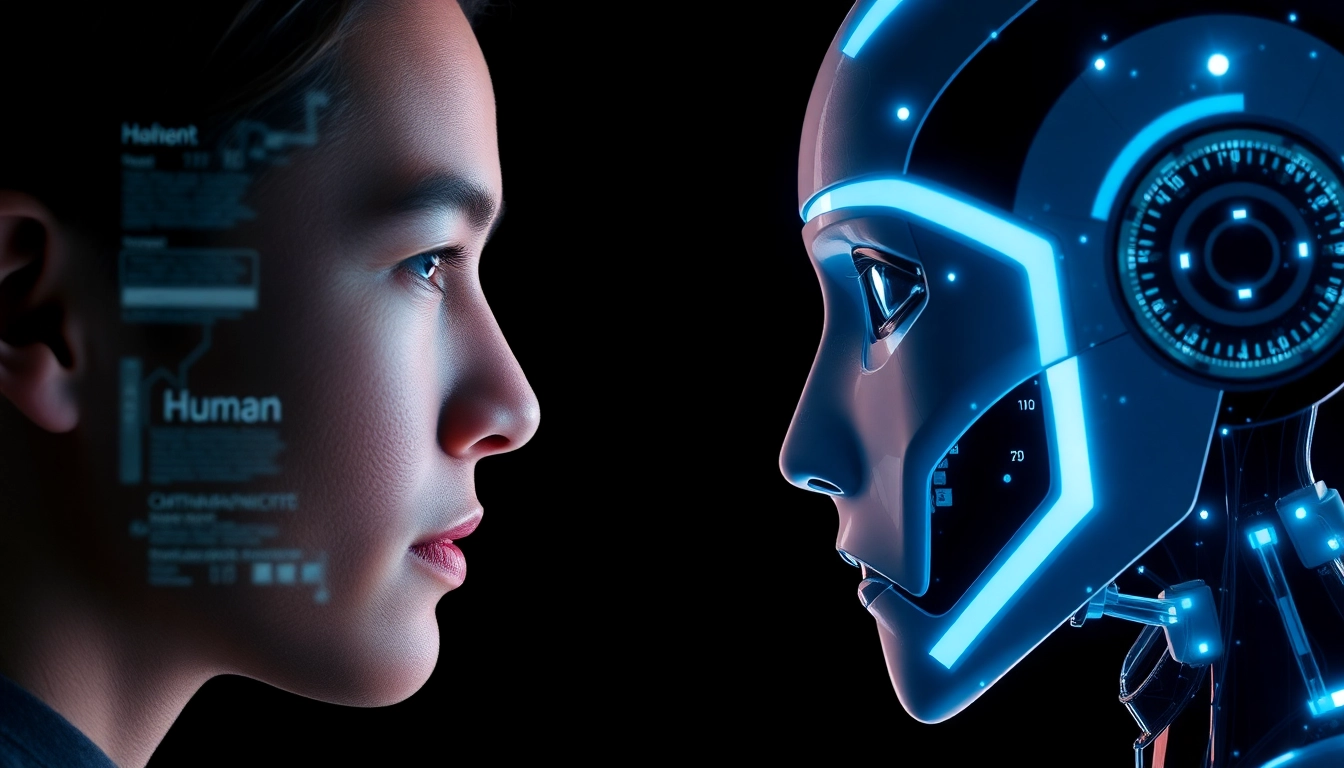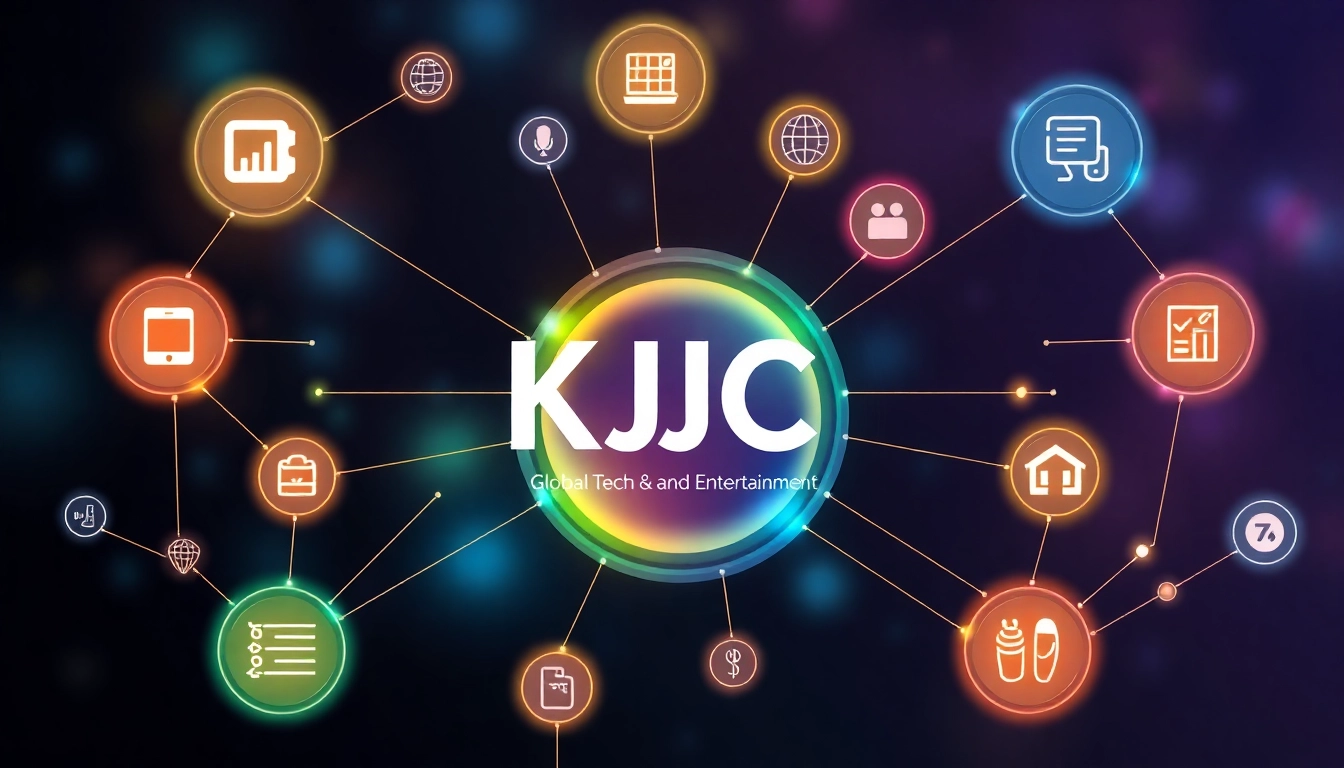Understanding the Human or Not Game and Its Significance
In an era where artificial intelligence (AI) continues to evolve at an unprecedented pace, understanding how to differentiate between human and AI-mediated interactions has become more vital than ever. Enter human or not — a groundbreaking social game designed to challenge your perception, sharpen your intuition, and provide insight into the capabilities of modern AI. This game isn’t just entertainment; it serves as an experimental platform that reflects ongoing advancements in AI technology and our collective ability to recognize and interpret machine-generated responses. In this section, we will explore what the Human or Not AI social Turing game entails, why its significance extends beyond mere fun, and how it mirrors current and future AI developments.
What Is the Human or Not AI Social Turing Game?
The Human or Not game is a digital interactive experience where participants engage in a face-to-face chat with an anonymous partner—either a fellow human or an AI-powered chatbot—within a strictly timed environment, usually two minutes. The core challenge lies in determining the true nature of your conversation partner based solely on their responses. Are they human or AI? This setup echoes the famous Turing Test, a benchmark proposed by Alan Turing to gauge a machine’s ability to exhibit behavior indistinguishable from that of a human. Unlike traditional Turing tests, which are formal and often academic, Human or Not democratizes this process by making it accessible to the everyday user, transforming it into a casual, yet revealing, social experiment.
The game leverages cutting-edge AI technology—such as GPT-4—to generate responses that can be remarkably human-like, blurring the line between organic and machine communication. Participants rely on their natural language skills, contextual awareness, and psychological intuition to spot subtle cues that reveal the true identity of their conversation partner. The novelty and challenge of the game are precisely what keep players engaged, pushing the boundaries of perception and understanding.
To get a sense of what it feels like to participate, consider this: After initiating a chat, you analyze the tone, style, and coherence of responses. Does the partner exhibit signs of human unpredictability, emotional nuance, or conversational flaws? Or do responses seem overly perfect, rapid, or lacking genuine emotion? Your judgement guides your guess, which, when revealed, offers fascinating insights into how AI is mimicking human conversation and where it still falls short.
The Importance of Differentiating Human and AI Interactions
Why does it matter whether we can tell human responses from AI? The implications reach far beyond entertainment into areas such as online etiquette, cybersecurity, digital marketing, and even the future of communication. As AI chatbots become more sophisticated, they are increasingly deployed in customer service, mental health support, and personal assistance, making it crucial for users to recognize when they are interacting with a machine.
Misidentification can lead to issues like misinformation, privacy breaches, or unwitting manipulation. For instance, detecting AI-driven scams or preventing the spread of disinformation hinges on our ability to discern automated responses accurately. Conversely, understanding AI’s capabilities furthers our ability to develop better human-computer interfaces, fostering trust and transparency in digital interactions.
Furthermore, the game stimulates critical thinking about authenticity, emotional connection, and the human element in communication. As AI begins to mimic and sometimes surpass human conversational skills, questions about consciousness, authenticity, and the essence of human interaction surface. The game encourages players to reflect on their perception processes, biases, and the thresholds of trust—fundamental elements in our digital age.
How the Game Reflects Advances in AI Technology
Modern AI technology, especially large language models like GPT-4, has dramatically advanced in generating coherent, contextually relevant, and emotionally nuanced responses. The Human or Not game embodies these technological milestones, offering real-time demonstrations of AI’s strengths and limitations.
Recent developments showcase AI’s ability to produce human-like dialogue, understand complex prompts, and simulate emotional tone—all of which are crucial in challenging human intuition in the game. Notably, AI can now handle multi-turn conversations, remember previous context, and even inject humor or empathy—traits once considered exclusive to humans.
However, AI’s progress also highlights its deficiencies. Despite its sophistication, AI often struggles with understanding ambiguous queries, maintaining consistency over long exchanges, or recognizing subtle emotional cues. The game exposes these gaps, allowing players to identify predictable patterns or anomalies that betray the machine’s nature.
By actively engaging in Human or Not, users indirectly participate in testing and refining AI systems. Feedback and insights gleaned from gameplay offer invaluable information for developers aiming to enhance AI responsiveness and authenticity. In this way, the game acts as an ongoing real-world experiment, charting AI’s trajectory while educating users about its rapid evolution.
How to Play Human or Not: Step-by-Step Guidance
Starting Your First Round of Human or Not
Getting started with the game is straightforward. Visit the official website, such as human or not, and initiate a chat. You’ll be paired with a partner—either another person or an AI—without prior knowledge. The conversation lasts for two minutes, during which your primary task is to engage naturally, asking questions, making comments, and observing responses attentively.
After the chat concludes, you’re prompted to make a binary judgment: Was your partner a human or an AI? Your guess is then revealed, and you see whether you succeeded. Numerous rounds can help refine your detection skills, and the game often provides tips or clues based on your past performance to help improve your accuracy over time.
Strategies for Improving Your Detection Skills
Effective detection hinges on developing keen observational skills. Here are some strategies:
- Ask open-ended questions: These elicit more complex responses that reveal the respondent’s depth of thought and emotional awareness.
- Notice response time and coherence: AI often responds rapidly and avoids contradictions, whereas human responses may include pauses, slight contradictions, or emotional nuances.
- Introduce ambiguity or humor: Humans often appreciate humor or irony, whereas AI might generate more literal replies.
- Pay attention to emotional expression: Humans tend to show empathy, humor, or personal anecdotes that AI responses might mimic but not fully replicate.
Regular gameplay, combined with reflective analysis, will enhance your instinct for recognizing artificial responses.
Common Mistakes and How to Avoid Them
Common pitfalls include overreliance on superficial cues or expecting AI to respond in a robotic manner. To mitigate this:
- Don’t focus solely on response speed: AI can now respond quickly but may lack emotional depth.
- Avoid predictable questions: Mix question types to prevent pattern recognition.
- Be aware of biases: Remember that AI can sometimes mimic human imperfection, so always consider context and subtleties.
By understanding and avoiding these errors, you sharpen your intuition and heighten your chances of correctly identifying your interlocutor.
Key Features and Benefits of the Human or Not Experience
Interactive Design and Real-Time Conversations
The game’s interface is designed for seamless and engaging interactions across desktops, tablets, and mobile devices. Its real-time nature fosters an immediate sense of connection, requiring players to think quickly and act intuitively. The responsive design ensures that the experience remains immersive, whether on a smartphone or a large monitor.
This setup challenges players to trust their instincts, hone their perceptual abilities, and adapt strategies based on ongoing interaction, thereby making each round a unique learning opportunity.
Privacy and Safety in Human or Not
Participant safety and data privacy are prioritized. All conversations are anonymous, with no personal information collected or stored without explicit consent. The platform abides by strict privacy policies, ensuring a secure environment for users to explore and experiment without concern about data breaches or misuse.
This focus on privacy not only complies with international standards but also fosters trust and openness in interactions, augmenting the authenticity of the gameplay experience.
How the Game Enhances Perception and Critical Thinking
Human or Not actively cultivates skills such as critical analysis, emotional intelligence, and adaptability. Engaging with AI challenges players to recognize subtle cues, question assumptions, and refine their perceptual acuity. Over time, players develop a more nuanced understanding of both human communication patterns and AI behavior.
Educators, psychologists, and AI developers utilize this game as a sandbox for exploring communication dynamics, biases, and the cognition behind human versus machine interactions. The game, therefore, serves as a diagnostic tool and a fun, practical way for users to improve their mental agility in digital communication.
Technology Behind Human or Not: AI Integration and Innovation
Using Cutting-Edge AI like GPT-4 in the Game
At the forefront of AI technology, GPT-4 and similar models power the chatbots that simulate human conversation within the game. These models leverage deep learning techniques, vast datasets, and sophisticated natural language understanding to generate responses that are contextually relevant and emotionally resonant.
The integration of GPT-4 ensures that AI counterparts can handle complex, multi-turn conversations, making the detection task genuinely challenging. AI responses can mimic humor, empathy, and even errors—traits that are essential for creating realistic interactions.
Robust Tech Stack for Seamless Gameplay
The game’s backend is supported by a robust tech stack that ensures stability, scalability, and smooth user experience. Tools like Amplitude are employed for analytics, tracking user interactions to optimize engagement and improve AI responsiveness. Platforms like Webflow facilitate responsive web design, enabling seamless play across devices.
This technological architecture not only guarantees performance but also allows ongoing updates and scalability, keeping the game relevant as AI technology progresses.
Future Directions and AI Developments in Human or Not
As AI continues to evolve, future iterations of Human or Not are expected to incorporate even more sophisticated models, including multimodal AI capable of processing images, videos, and audio in addition to text. These advancements will further complicate detection, pushing the boundaries of what is possible in AI-human indistinguishability.
Simultaneously, innovations in explainability—making AI responses more transparent—will help users better understand and detect AI behavior. Integrating user feedback into AI training will create more personalized and challenging experiences.
Join the Community and Improve Your Skills Today
Community Tips and Player Insights
Participating in the Human or Not community fosters knowledge-sharing. Players often exchange strategies, create customized questions, and discuss AI limitations. Online forums, social media groups, and Reddit channels dedicated to Human or Not are treasure troves for expert tips and collective learning.
For example, some players recommend making questions that probe emotional depth or introduce humor, which machines struggle to handle convincingly. Others suggest varying conversation patterns to avoid predictable AI responses.
Participate in Conversations About AI in Daily Life
By engaging with Human or Not, players become more aware of AI’s role in their own lives. Recognizing AI in customer support, social media, or virtual assistants helps users become informed participants in a digital ecosystem that is increasingly AI-driven. The game acts as both a learning tool and a conversation starter about AI ethics, transparency, and societal impact.
Getting Started: How to Access and Play Human or Not
Getting started is easy: simply visit the official website, register if necessary, and begin your first round. The platform’s intuitive interface ensures an accessible experience for newcomers and seasoned players alike. Regular updates, community challenges, and leaderboard features keep players motivated to improve and compete.



